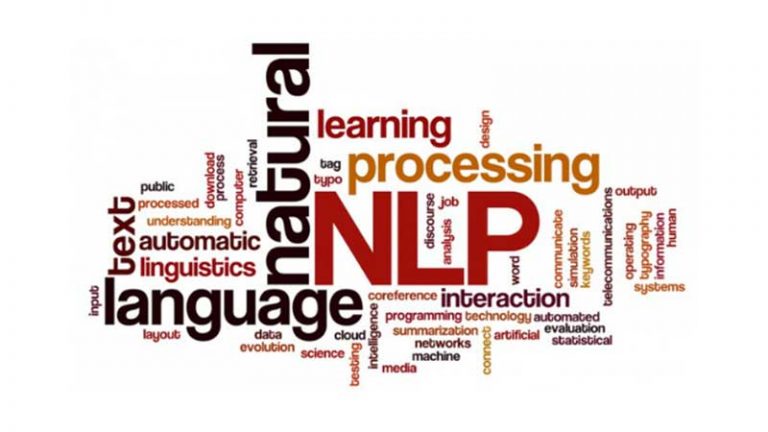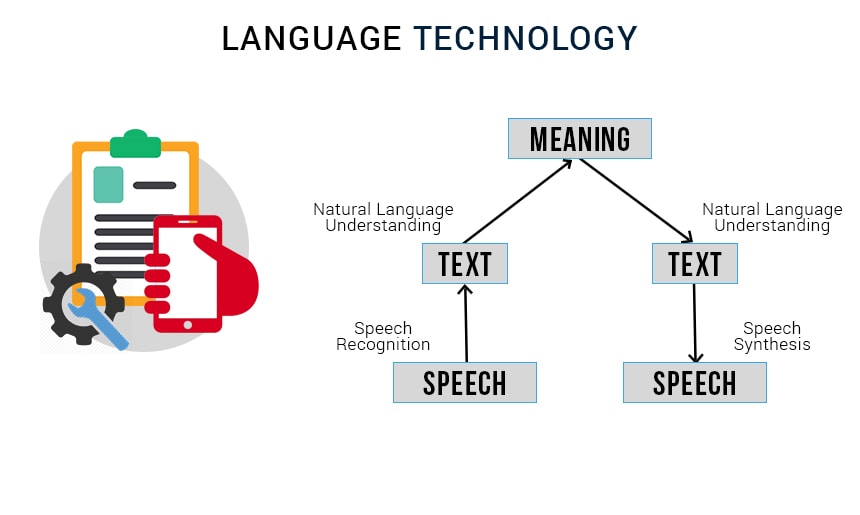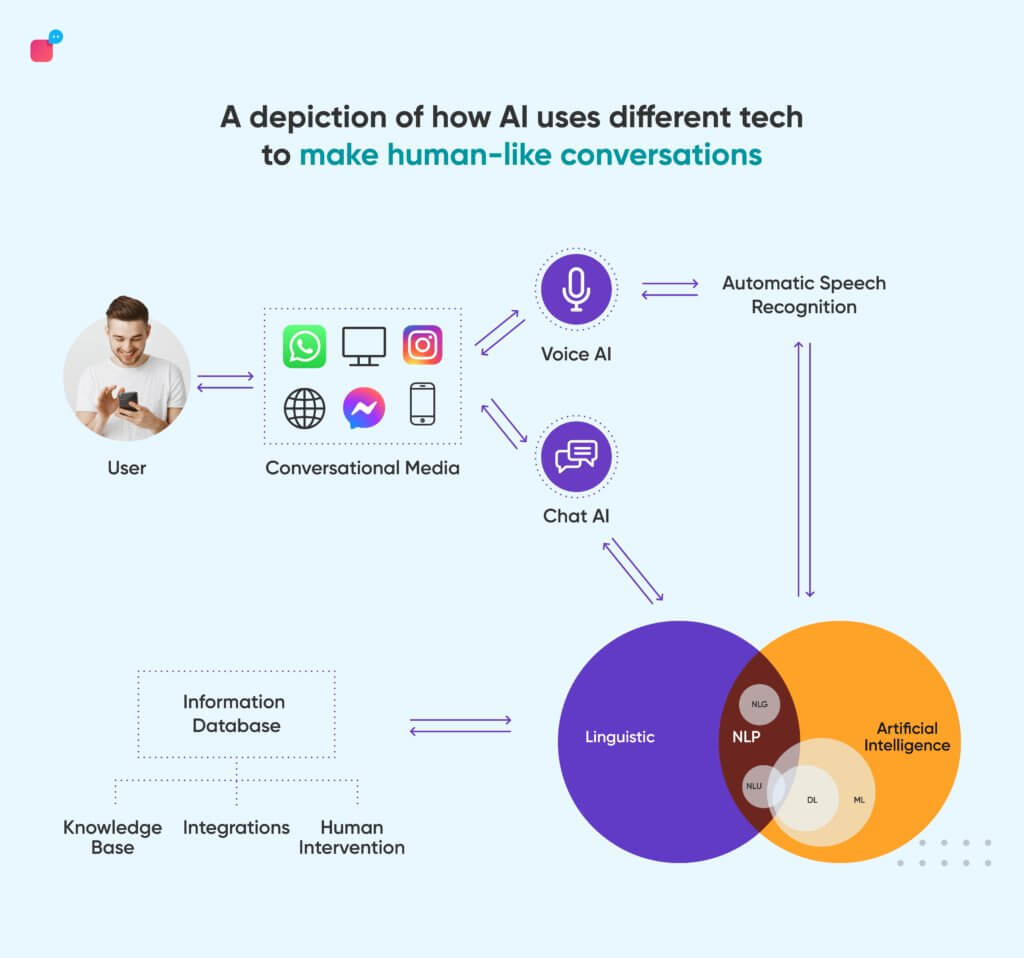Unlocking the Potential of Natural Language Processing for SaaS Startups
Natural language processing (NLP) has revolutionized the way businesses interact with their customers, and SaaS startups are no exception. By leveraging NLP-powered chatbots, SaaS startups can provide 24/7 customer support, improve customer engagement, and enhance overall customer experience. NLP technology enables chatbots to understand and interpret human language, allowing them to respond accurately and efficiently to customer inquiries.
The integration of NLP-powered chatbots in SaaS startups has numerous benefits. For instance, chatbots can help reduce the workload of human customer support agents, allowing them to focus on more complex issues. Additionally, chatbots can provide instant responses to customer inquiries, reducing wait times and improving customer satisfaction. Moreover, NLP-powered chatbots can analyze customer interactions and provide valuable insights that can help SaaS startups improve their products and services.
However, implementing NLP-powered chatbots in SaaS startups requires careful consideration. It is essential to choose the right NLP technology that can understand the nuances of human language and provide accurate responses. Moreover, SaaS startups must ensure that their chatbots are integrated with their existing customer support systems to provide a seamless customer experience.
Some of the key applications of NLP in chatbots for SaaS startups include intent recognition, entity extraction, and sentiment analysis. Intent recognition enables chatbots to understand the purpose of a customer’s message, while entity extraction allows chatbots to identify and extract specific information from customer interactions. Sentiment analysis, on the other hand, enables chatbots to analyze customer emotions and provide personalized responses.
By leveraging NLP-powered chatbots, SaaS startups can improve customer engagement, reduce support costs, and enhance overall customer experience. As the technology continues to evolve, we can expect to see more innovative applications of NLP in chatbots for SaaS startups. With the right implementation and integration, NLP-powered chatbots can become a game-changer for SaaS startups looking to provide exceptional customer support.
How to Choose the Right NLP Technology for Your Chatbot
When it comes to selecting the most suitable NLP technology for a chatbot, SaaS startups must consider several factors to ensure they choose a solution that meets their specific needs. One of the key considerations is intent recognition, which enables chatbots to understand the purpose of a customer’s message. Entity extraction is another important factor, as it allows chatbots to identify and extract specific information from customer interactions.
Sentiment analysis is also a crucial aspect of NLP technology, as it enables chatbots to analyze customer emotions and provide personalized responses. Additionally, SaaS startups must consider the level of customization required for their chatbot, as well as the scalability and flexibility of the NLP technology. It is also essential to evaluate the accuracy and reliability of the NLP technology, as well as its ability to handle ambiguity and uncertainty.
Another important consideration is the integration of the NLP technology with existing customer support systems. SaaS startups must ensure that the NLP technology can seamlessly integrate with their CRM, helpdesk, and other customer support tools. This will enable them to provide a cohesive and streamlined customer experience, while also reducing the complexity and cost of implementing and maintaining multiple systems.
Some popular NLP technologies for chatbots include IBM Watson, Google Cloud Natural Language, and Microsoft Azure Cognitive Services. Each of these technologies has its strengths and weaknesses, and SaaS startups must carefully evaluate their options to determine which one best meets their needs. By choosing the right NLP technology, SaaS startups can create chatbots that provide exceptional customer experiences, improve customer engagement, and drive business growth.
When evaluating NLP technologies, SaaS startups should also consider the level of support and resources provided by the vendor. This includes documentation, training, and customer support, as well as the availability of APIs and SDKs for customization and integration. By carefully evaluating these factors, SaaS startups can make an informed decision and choose an NLP technology that meets their specific needs and requirements.
The Role of Machine Learning in Chatbot Development
Machine learning plays a crucial role in chatbot development, enabling chatbots to improve their accuracy, handle ambiguity, and adapt to user behavior. By leveraging machine learning algorithms, chatbots can analyze vast amounts of data and learn from user interactions, allowing them to refine their responses and improve their overall performance.
One of the key applications of machine learning in chatbot development is intent recognition. By analyzing user input, chatbots can identify the intent behind the user’s message and respond accordingly. This enables chatbots to provide more accurate and relevant responses, improving the overall user experience.
Machine learning also enables chatbots to handle ambiguity and uncertainty. By analyzing user input and context, chatbots can identify potential ambiguities and clarify user intent, reducing the likelihood of misinterpretation and improving the overall accuracy of the chatbot.
Another important application of machine learning in chatbot development is user behavior analysis. By analyzing user interactions, chatbots can identify patterns and trends, allowing them to adapt their responses and improve the overall user experience. This enables chatbots to provide more personalized and relevant responses, improving user engagement and satisfaction.
In the context of SaaS startups, machine learning is particularly important for chatbot development. By leveraging machine learning algorithms, SaaS startups can create chatbots that provide exceptional customer experiences, improve customer engagement, and drive business growth. Additionally, machine learning enables SaaS startups to analyze vast amounts of customer data, providing valuable insights that can inform product development and improve customer support.
Some popular machine learning algorithms used in chatbot development include supervised learning, unsupervised learning, and reinforcement learning. Supervised learning enables chatbots to learn from labeled data, while unsupervised learning enables chatbots to identify patterns and trends in unlabeled data. Reinforcement learning enables chatbots to learn from user feedback, allowing them to refine their responses and improve their overall performance.
Real-World Examples of Successful Chatbot Implementations
Several SaaS startups have successfully implemented NLP-powered chatbots to improve their customer support and engagement. For example, a leading e-commerce platform used a chatbot to handle customer inquiries and provide personalized product recommendations. The chatbot was able to resolve over 70% of customer queries, resulting in a significant reduction in support tickets and an improvement in customer satisfaction.
Another example is a SaaS startup that provides a customer relationship management (CRM) platform. They implemented a chatbot to help customers with common queries and issues, such as password reset and account setup. The chatbot was able to resolve over 90% of customer queries, resulting in a significant reduction in support tickets and an improvement in customer satisfaction.
A third example is a SaaS startup that provides a marketing automation platform. They implemented a chatbot to help customers with common queries and issues, such as campaign setup and lead scoring. The chatbot was able to resolve over 80% of customer queries, resulting in a significant reduction in support tickets and an improvement in customer satisfaction.
These examples demonstrate the potential of NLP-powered chatbots to improve customer support and engagement in SaaS startups. By providing personalized and relevant responses to customer queries, chatbots can help reduce support tickets, improve customer satisfaction, and drive business growth.
However, implementing NLP-powered chatbots also comes with its own set of challenges. For example, chatbots require significant amounts of training data to learn and improve, and they can be prone to errors and biases. Additionally, chatbots require careful integration with existing customer support systems to ensure a seamless customer experience.
Despite these challenges, the benefits of NLP-powered chatbots in SaaS startups are clear. By providing personalized and relevant responses to customer queries, chatbots can help improve customer satisfaction, reduce support tickets, and drive business growth. As the technology continues to evolve, we can expect to see even more innovative applications of NLP-powered chatbots in SaaS startups.
Designing Conversational Interfaces for Chatbots
Designing conversational interfaces for chatbots is a crucial aspect of creating an effective and engaging customer experience. A well-designed conversational interface can help to build trust and rapport with customers, while also providing a seamless and intuitive interaction experience.
One of the key principles of designing conversational interfaces for chatbots is to craft engaging dialogue flows. This involves creating a conversation that is natural and intuitive, with a clear and concise language that is easy to understand. The dialogue flow should also be designed to handle user input and provide feedback in a way that is responsive and engaging.
Another important aspect of designing conversational interfaces for chatbots is to handle user input effectively. This involves using natural language processing (NLP) to understand the user’s intent and provide a relevant response. The chatbot should also be able to handle ambiguity and uncertainty, and provide a clear and concise response that addresses the user’s query.
Providing feedback is also an essential aspect of designing conversational interfaces for chatbots. This involves providing a clear and concise response that acknowledges the user’s input and provides a relevant solution. The feedback should also be designed to be engaging and interactive, with a clear call-to-action that encourages the user to continue the conversation.
In the context of SaaS startups, designing conversational interfaces for chatbots is particularly important. By providing a seamless and intuitive interaction experience, SaaS startups can build trust and rapport with their customers, while also providing a competitive advantage in the market.
Some best practices for designing conversational interfaces for chatbots include using a clear and concise language, handling user input effectively, and providing feedback that is engaging and interactive. Additionally, SaaS startups should also consider using machine learning algorithms to improve the chatbot’s ability to understand and respond to user input.
By following these best practices, SaaS startups can create conversational interfaces for chatbots that are effective, engaging, and provide a seamless and intuitive interaction experience for their customers.
Measuring the Effectiveness of Chatbots in Customer Support
Measuring the effectiveness of chatbots in customer support is crucial to understand their impact on customer experience and business outcomes. By tracking key metrics, SaaS startups can evaluate the performance of their chatbots and identify areas for improvement.
One of the most important metrics to track is resolution rate, which measures the percentage of customer issues resolved by the chatbot. A high resolution rate indicates that the chatbot is effective in resolving customer issues, while a low resolution rate may indicate that the chatbot is not providing accurate or relevant solutions.
Another important metric to track is customer satisfaction, which measures the level of satisfaction customers have with the chatbot’s performance. This can be measured through surveys, feedback forms, or Net Promoter Score (NPS) analysis. A high customer satisfaction rate indicates that the chatbot is meeting customer expectations, while a low customer satisfaction rate may indicate that the chatbot is not providing a good user experience.
Chatbot accuracy is also an important metric to track, which measures the percentage of accurate responses provided by the chatbot. A high accuracy rate indicates that the chatbot is providing accurate and relevant solutions, while a low accuracy rate may indicate that the chatbot is not understanding customer intent or providing incorrect solutions.
In addition to these metrics, SaaS startups should also track other key performance indicators (KPIs) such as conversation volume, conversation duration, and user engagement. By tracking these metrics, SaaS startups can gain a comprehensive understanding of their chatbot’s performance and identify areas for improvement.
It’s also important to note that measuring the effectiveness of chatbots in customer support is not a one-time task, but rather an ongoing process. SaaS startups should continuously monitor and analyze their chatbot’s performance to identify areas for improvement and make data-driven decisions to optimize their chatbot’s performance.
By measuring the effectiveness of chatbots in customer support, SaaS startups can ensure that their chatbots are providing a good user experience, resolving customer issues effectively, and driving business outcomes. This will help SaaS startups to stay competitive in the market and provide a better customer experience.
Overcoming Common Challenges in Chatbot Development
Chatbot development can be a complex and challenging process, especially for SaaS startups that are new to the technology. One of the most common challenges in chatbot development is handling ambiguity, which can occur when the chatbot is unsure of the user’s intent or is unable to understand the context of the conversation.
Another common challenge in chatbot development is dealing with user frustration, which can occur when the chatbot is unable to provide a satisfactory response to the user’s query. This can lead to a negative user experience and a loss of trust in the chatbot.
Ensuring chatbot security and compliance is also a major challenge in chatbot development. Chatbots often handle sensitive user data, such as personal and financial information, which must be protected from unauthorized access and misuse.
To overcome these challenges, SaaS startups can use a variety of techniques, such as intent recognition, entity extraction, and sentiment analysis. Intent recognition involves identifying the user’s intent behind their message, while entity extraction involves identifying and extracting specific information from the user’s message.
Sentiment analysis involves analyzing the user’s emotions and sentiment to provide a more personalized and empathetic response. By using these techniques, SaaS startups can create chatbots that are more effective and efficient, and that provide a better user experience.
Additionally, SaaS startups can use machine learning algorithms to improve the chatbot’s ability to handle ambiguity and user frustration. Machine learning algorithms can be trained on large datasets to recognize patterns and anomalies, and to provide more accurate and personalized responses.
Ensuring chatbot security and compliance is also crucial, and SaaS startups can use a variety of techniques, such as encryption and access controls, to protect user data and prevent unauthorized access.
By overcoming these common challenges in chatbot development, SaaS startups can create chatbots that are more effective, efficient, and secure, and that provide a better user experience.
Future Directions for NLP-Powered Chatbots in SaaS Startups
As SaaS startups continue to leverage natural language processing (NLP) for chatbots, the future holds exciting possibilities for innovation and growth. Emerging trends and technologies are poised to revolutionize the way chatbots interact with customers, enhancing the overall user experience and driving business success.
One of the most significant future directions for NLP-powered chatbots is the integration of multimodal interaction. This involves enabling chatbots to engage with users through multiple channels, such as voice, text, and visual interfaces. By providing users with a range of interaction options, SaaS startups can create more intuitive and user-friendly chatbot experiences that cater to diverse preferences and needs.
Another area of focus is the development of emotional intelligence in chatbots. By incorporating emotional intelligence, chatbots can better understand and respond to user emotions, empathizing with customers and providing more personalized support. This can lead to increased customer satisfaction and loyalty, ultimately driving business growth and revenue.
Explainability is also becoming a critical aspect of NLP-powered chatbots. As chatbots become more sophisticated, it’s essential to provide users with transparent and understandable explanations of their decision-making processes. This can help build trust and confidence in chatbot interactions, ensuring that users feel comfortable and informed throughout the support process.
Furthermore, the increasing availability of cloud-based NLP services is making it easier for SaaS startups to develop and deploy chatbots. These services provide pre-trained models and scalable infrastructure, enabling startups to quickly and efficiently integrate NLP-powered chatbots into their customer support systems.
As the use of NLP-powered chatbots in SaaS startups continues to evolve, it’s essential to prioritize ongoing innovation and improvement. By staying at the forefront of emerging trends and technologies, SaaS startups can unlock the full potential of NLP-powered chatbots and deliver exceptional customer experiences that drive business success.
By embracing these future directions, SaaS startups can harness the power of NLP-powered chatbots to revolutionize customer support, drive growth, and stay ahead of the competition. As the landscape continues to evolve, one thing is clear: the future of customer support is bright, and NLP-powered chatbots are leading the way.






.jpg)

